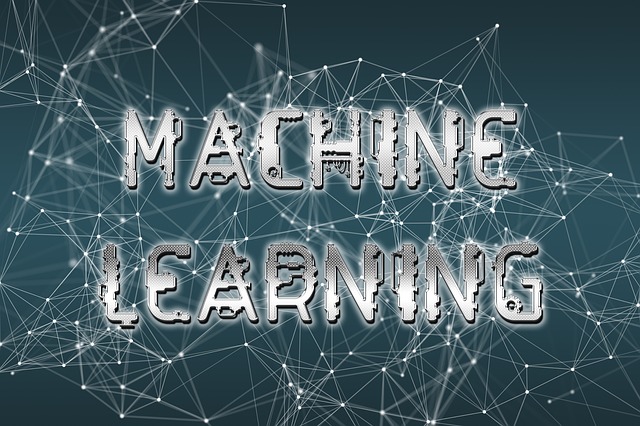
What is NLP?
Natural Language Processing (NLP) is a crucial branch of Artificial Intelligence (AI) dedicated to enabling computers to understand, interpret, and respond to human language in a way that is both useful and meaningful. It acts as a bridge between human communication and machine understanding, allowing technology to process and analyze language in its many forms, whether spoken or written. NLP powers a wide range of applications, making it an essential part of our daily lives. From analyzing massive volumes of text data to generating human-like responses in real time, its impact spans across industries and use cases.
This technology is the driving force behind virtual assistants like Siri, Alexa, and Google Assistant, providing them with the ability to interpret voice commands and respond effectively. It enables language translation tools like Google Translate to convert text or speech from one language to another with remarkable accuracy. Sentiment analysis, another application of NLP, helps businesses understand customer emotions and opinions by analyzing reviews, feedback, or social media posts. Chatbots, powered by NLP, have transformed customer service by offering instant, automated responses to queries, saving time and improving user experience.
NLP combines computational linguistics, which focuses on the rules and structure of language, with machine learning algorithms that help systems improve over time by learning from data. This interdisciplinary approach continues to evolve, making it possible for machines to grasp complexities such as idioms, context, and even emotional nuances in communication. As a result, NLP is revolutionizing the way humans interact with machines, unlocking new possibilities in both personal and professional environments, from streamlining workflows to creating more accessible technologies for all.
Why is NLP Important?
With the exponential growth of data and the increasing demand for intelligent solutions, Natural Language Processing (NLP) has become indispensable in bridging the gap between humans and machines. By enabling computers to understand, interpret, and respond to human language, NLP is transforming the way we interact with technology. From powering voice-activated assistants like Siri and Alexa to analyzing massive amounts of text data for insights, NLP is reshaping how organizations operate, make decisions, and innovate. Its applications span industries, including healthcare, finance, customer service, and beyond, offering smarter tools for everything from sentiment analysis to real-time language translation.
1. https://kingjade.com.vn/tai-sao-nam-deo-mat-day-quan-am-nu-deo-phat-di-lac
2. https://kingjade.com.vn/da-thach-anh-la-gi-tat-tan-tat-nhung-dieu-nen-biet-ve-da-thach-anh
3. https://kingjade.com.vn/nhan-phong-thuy-menh-thuy-va-cach-deo-de-thu-hut-tai-van
4. https://kingjade.com.vn/note-ngay-3-cach-tang-van-dao-hoa-cho-canh-dan-ong-cuc-chuan
5. https://kingjade.com.vn/5-cong-doan-lam-nen-mot-chiec-vong-ngoc-hoan-hao
Preview: Read on to explore how NLP works, its core techniques, real-world applications across various industries, and what the future holds for this rapidly evolving field.
The Fundamentals of NLP

Breaking Down NLP
- Natural Language refers to human languages like English, Spanish, or Hindi that people use every day to communicate. These languages are complex, with rules, context, and nuances that make them unique and varied.
- Processing refers to the computational techniques and algorithms used to interpret, analyze, and respond to these languages. It involves tasks like understanding grammar, identifying meaning, and generating appropriate responses, enabling computers to interact with humans in a more natural and intuitive way.
When Did NLP Emerge?
Natural Language Processing (NLP) began in the 1950s when researchers explored ways to enable machines to understand human language. Early efforts focused on tasks like machine translation, laying the foundation for future advancements. Despite limitations in computing and language understanding, these experiments sparked interest that led to the sophisticated NLP systems we use today, like chatbots and language models such as GPT.
How NLP Works:
NLP relies on two core components:
- Natural Language Understanding (NLU): NLU is a vital component of natural language processing that extracts meaning from text by analyzing syntax, semantics, and context. It enables systems to interpret user input with high accuracy, identifying the user’s intent (what they want to achieve) and relevant entities (key pieces of information such as names, dates, or locations). By breaking down complex sentences into understandable components, NLU allows machines to better understand human language, paving the way for seamless human-computer interaction.
- Natural Language Generation (NLG): NLG is the process of generating coherent, context-sensitive responses based on structured data or processed input. It transforms raw data into natural, human-like text that fits the flow of the conversation. This process ensures that the system’s output aligns with the conversation’s context, delivering responses that feel intuitive and engaging. From generating customer service replies to summarizing large datasets in plain language, NLG plays a critical role in creating smooth and meaningful user experiences.
- These processes incorporate linguistic concepts like syntax (sentence structure), semantics (meaning), and pragmatics (context).
Key Techniques in NLP

Modern NLP employs cutting-edge methods to make human-computer interactions seamless. Here are some key techniques:
- Tokenization: The process of breaking down text into smaller units, such as words, phrases, or sentences, to make it easier for machines to analyze and interpret. For example, splitting “Natural Language Processing is fascinating” into [“Natural”, “Language”, “Processing”, “is”, “fascinating”].
- Named Entity Recognition (NER): A technique used to identify and classify entities such as names of people, locations, dates, or organizations within a text. For instance, in the sentence “Google was founded in California,” NER would recognize “Google” as an organization and “California” as a location.
- Sentiment Analysis: The process of analyzing text to determine the emotional tone or sentiment behind it, such as positive, negative, or neutral. For example, the phrase “I love this product!” would generally be tagged as positive sentiment.
- Part-of-Speech Tagging (POS): Assigning grammatical labels, like nouns, verbs, adjectives, or adverbs, to each word in a sentence. For example, in “The dog runs quickly,” “dog” would be tagged as a noun, “runs” as a verb, and “quickly” as an adverb.
- Dependency Parsing: A method of analyzing the syntactic structure of a sentence by identifying how words are connected and related. For example, in the sentence “She enjoys reading books,” dependency parsing would show that “enjoys” is the root verb, “She” is the subject, and “reading books” is the object.
- Word Embeddings: Representing words as dense, numerical vectors in a way that captures semantic relationships between them. Techniques like Word2Vec or GloVe allow machines to understand that “king” and “queen” are related in meaning, and “king” is closer to “prince” than “apple” in the vector space. These embeddings are fundamental to many NLP tasks.
Example: When a chatbot translates the sentence “Book a flight to Paris” into actionable data, it relies on tokenization, NER (recognizing “flight” and “Paris”), and dependency parsing.
Applications of NLP in Real Life

NLP powers a wide range of everyday technologies.
1. https://kingjade.com.vn/tai-sao-nen-xem-gio-de-deo-vong-ngoc-tu-nhien
2. https://kingjade.com.vn/nam-2023-la-nam-gi-phong-thuy-trang-suc-cho-nam-2023
3. https://kingjade.com.vn/note-ngay-6-van-de-nay-de-cong-viec-thang-tien-nhanh
4. https://kingjade.com.vn/note-ngay-cach-deo-nhan-phong-thuy-mang-lai-may-man-va-tai-loc
5. https://kingjade.com.vn/5-cong-doan-lam-nen-mot-chiec-vong-ngoc-hoan-hao
- Search Engines (like Google): These incredibly powerful tools rely on natural language processing (NLP) to understand user intent and deliver the most relevant results. By analyzing keywords, context, and even user behavior, they can anticipate needs and provide suggestions that improve the efficiency of online searches. For example, when you start typing a query, search engines often predict what you’re looking for, saving time and effort while ensuring more accurate results.
- Chatbots & Virtual Assistants (e.g., Siri, Alexa): By leveraging NLP, chatbots and virtual assistants create smoother, more interactive conversations with users. They can answer questions, perform a variety of tasks, and even adapt to personalized commands, making daily life more convenient. Whether you’re asking Alexa to play your favorite playlist or using a chatbot to track an online order, these technologies integrate seamlessly into everyday activities to enhance user experiences.
- Sentiment Analysis: A game-changing tool for brands, sentiment analysis uses NLP to analyze social media mentions, reviews, customer feedback, and other textual content. By detecting sentiment—whether positive, negative, or neutral—it helps businesses understand public perception, manage their reputation, and respond proactively to potential PR crises. For instance, if customers express dissatisfaction on social media, brands can intervene quickly to resolve the issue before it escalates.
- Language Translation (e.g., Google Translate): This technology helps bridge the gap between different languages by converting text or speech from one language to another in real-time. It fosters global communication and collaboration by enabling people from diverse linguistic backgrounds to interact seamlessly. For example, travelers can quickly translate foreign signage, or businesses can communicate with international clients more effectively.
- Text Summarization: Text summarization condenses lengthy articles, reports, or documents into concise summaries, saving time while ensuring key insights aren’t lost. This is especially valuable in fields like journalism, research, and business, where quickly understanding the main points of complex information can support faster and more informed decision-making.
- Spam Filtering (e.g., Gmail): Spam filtering uses sophisticated algorithms to detect and filter out unwanted emails, protecting users from phishing attempts, scams, and malware. By identifying suspicious patterns in email content, such as misleading subject lines or unverified senders, spam filters help maintain a clean inbox while shielding users from potential cyber threats.
- Legal and Medical Insights: NLP-powered tools analyze complex legal and medical documents to extract actionable insights and important information. In the legal field, this technology helps professionals quickly identify relevant clauses or precedents, saving hours of manual review. In medicine, it can assist in interpreting patient records, research papers, or clinical notes, enabling quicker and more accurate decision-making in high-stakes environments where precision is vital.
Case Study: Retailers use NLP to power chatbots that provide product recommendations, reducing customer support workload and increasing sales.
Benefits of NLP

Adopting NLP can lead to the following advantages:
- Improved Communication between humans and machines, enabling more natural and intuitive interactions through advancements in AI technologies like natural language processing. These technologies allow machines to understand context, tone, and intent, making interactions feel more human and less robotic.
- Automation of Repetitive Tasks, such as processing customer inquiries, answering FAQs, or generating and summarizing reports. By automating these mundane processes, businesses can free up valuable time and focus on strategic, high-priority work that drives growth and innovation.
- Enhanced Customer Experience by delivering personalized responses and support through interactive chatbots and virtual assistants. These tools ensure faster, more accurate, and satisfying resolutions for customers, improving brand loyalty and creating a seamless support experience.
- Data Insights extracted from unstructured data sources like emails, social media, or customer feedback. AI-powered tools analyze this data to uncover trends, patterns, and actionable insights, helping businesses make informed decisions and stay ahead of their competition.
- Breaking Language Barriers with real-time translation tools, allowing people from different linguistic and cultural backgrounds to communicate effortlessly. These tools remove language as a barrier, fostering collaboration, understanding, and connectivity on a global scale.
Challenges and Limitations of NLP

Despite its impressive progress, NLP faces challenges, including:
- Language Ambiguity: Words often have multiple meanings depending on context, which can lead to misunderstandings. For instance, “bank” could mean a financial institution or the side of a river, and without additional context, it’s challenging to determine the intended meaning.
- Understanding Context: Grasping cultural nuances, regional accents, and even sarcasm is a significant challenge for natural language processing. For example, sarcasm or idiomatic expressions may not translate literally, causing the AI to misinterpret the intended tone or meaning.
- Data Bias: NLP models can inherit biases from the datasets they’re trained on, which may reflect societal stereotypes or prejudices. This can lead to biased outputs that reinforce harmful narratives, making it crucial to address and mitigate such issues during training and deployment.
- Resource-Intensive Training: Training NLP models like ChatGPT demands enormous computational power and energy resources. Developing and maintaining these systems require high-performance hardware, which can be costly and raises considerations about environmental impact.
- Security Risks: AI-powered systems can be misused to generate misinformation, spam, or biased content at scale. This poses challenges for ensuring ethical AI use and protecting users from harmful or deceptive outputs.
Example: Bias-mitigation strategies like OpenAI’s efforts to improve transparency in GPT models help address theseAn error occurred during generation. Please try again or contact support if it continues.
















